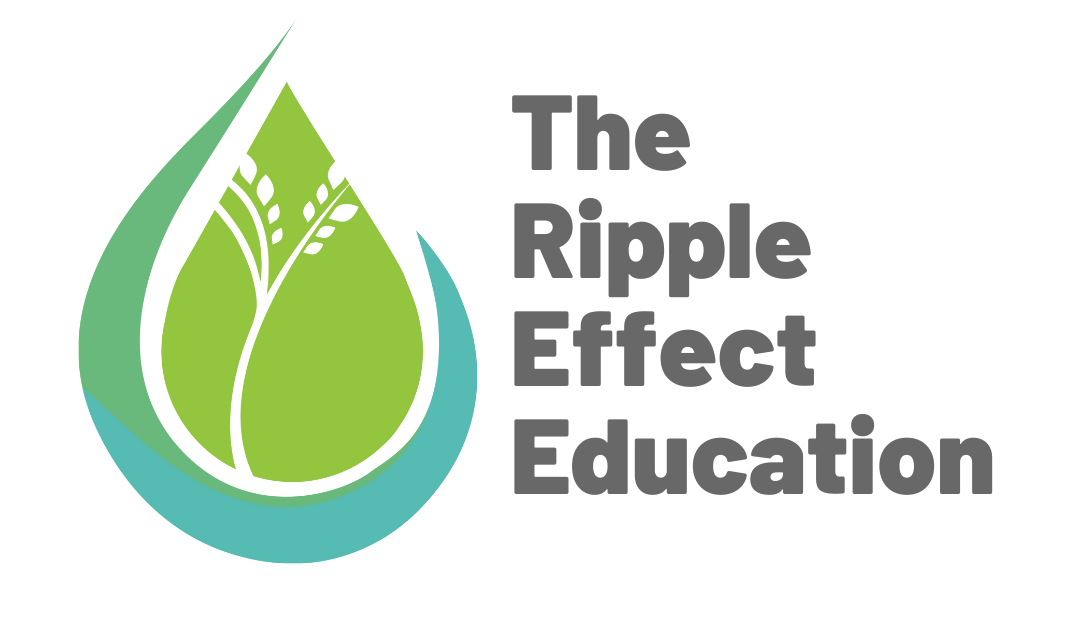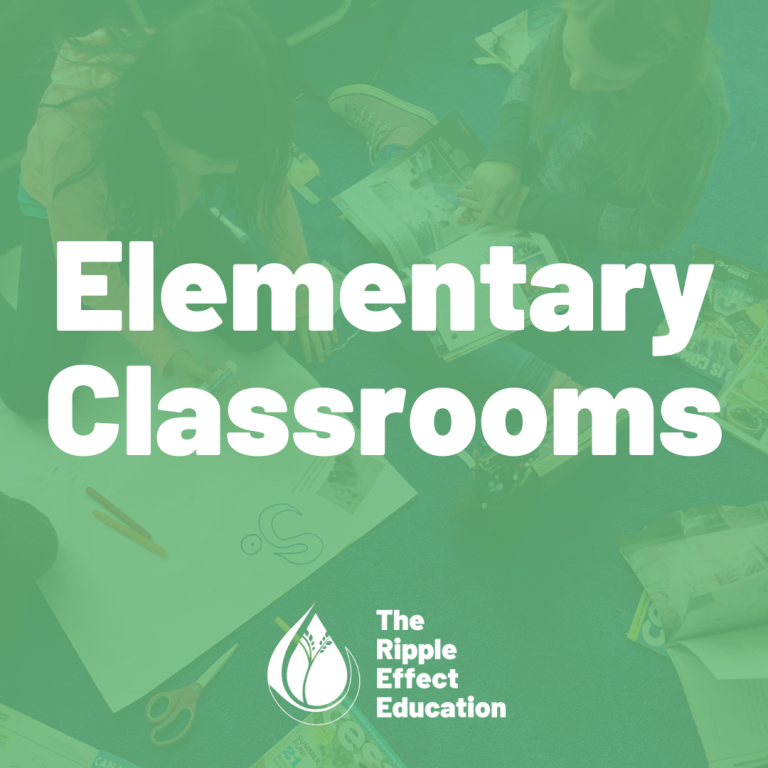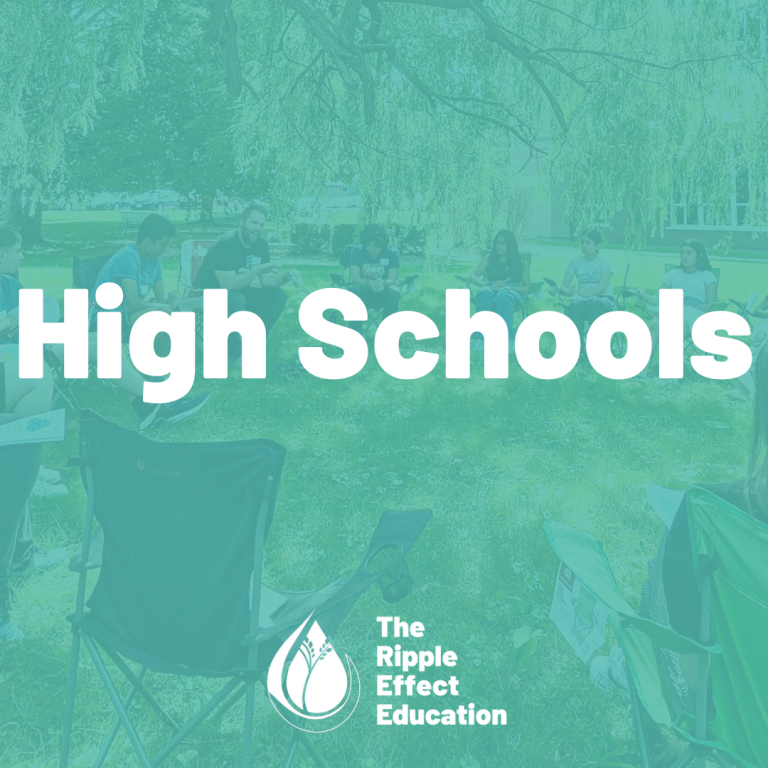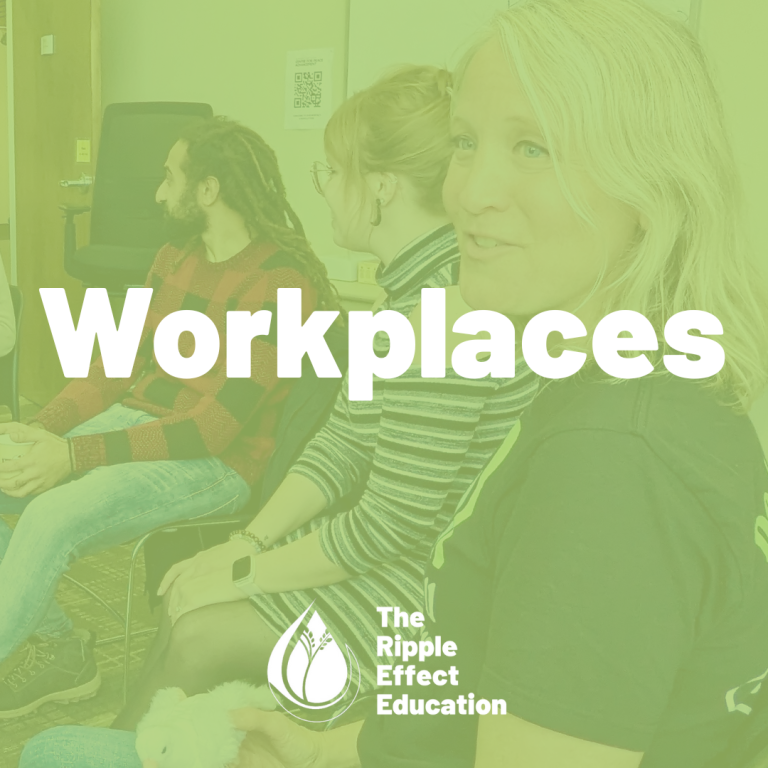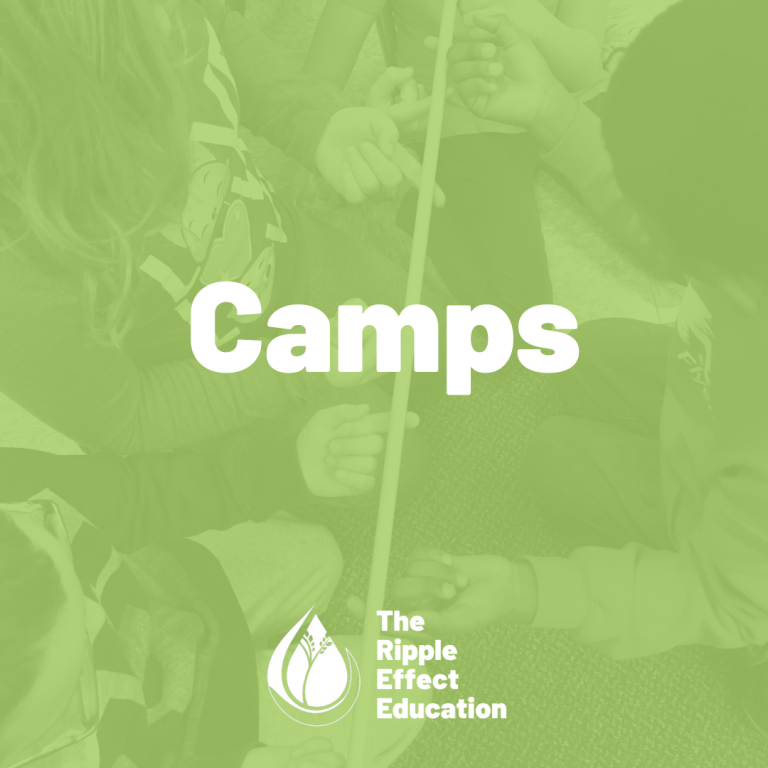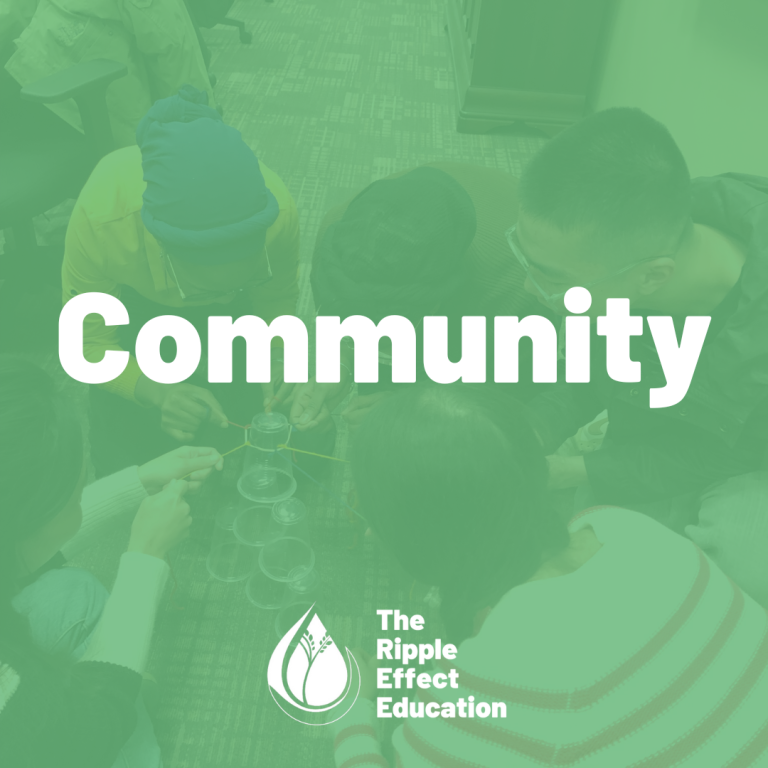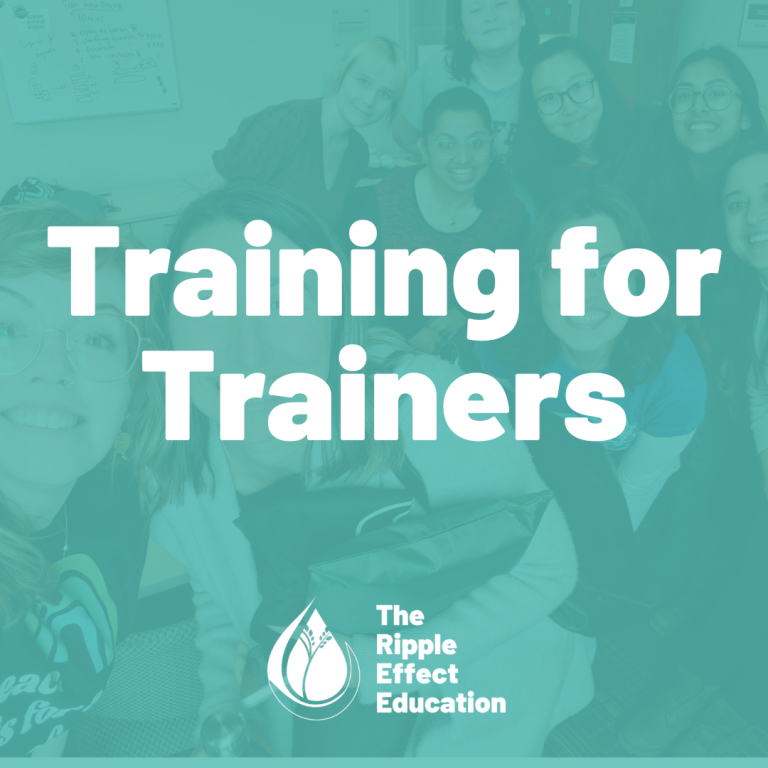“I’m sure he knew what I meant.”
“She knows I was kidding!”
Sometimes, even when we have the best intentions, our words and actions hurt people. Maybe someone says something and it feels like a backhanded compliment. Or you respond with a sarcastic comment that leaves a sting. You can fill in the blank with experiences that come to mind when someone said something that came across all wrong. And sometimes we’re that person, and the reaction we get is totally different from what we expected.
People are complex beings, with complex emotions and thought processes. It is no surprise that when two people come together and communicate, they don’t always understand each other perfectly. Miscommunication is one of those things that happens in daily life, but is also one of the biggest sources of conflict.
So how do we deal with that?
A tool that we teach in TREE workshops, and that we always come back to, is the Intent/Action/Effect model.
There are two spheres in this model; Seen and Unseen. On the unseen side, we have our thoughts and feelings that we don’t share with others. They remain private to us, unless we decide to bring them out into the open. On the Seen side, we have our actions, the things we say and do that others can hear, see and interpret for themselves.
Intent: Our intentions influence our outward behaviour. It’s the meaning or purpose behind our Seen actions.
Action: Carrying out our intentions through what we say and do.
Effect: How the other person interprets our actions. It’s all about how it landed with them, based on their own personal experience and existing relationship with the person.
Seems straightforward, right? This is how all of our social interactions happen. But, when our actions have a negative impact on others, conflict can begin to brew.
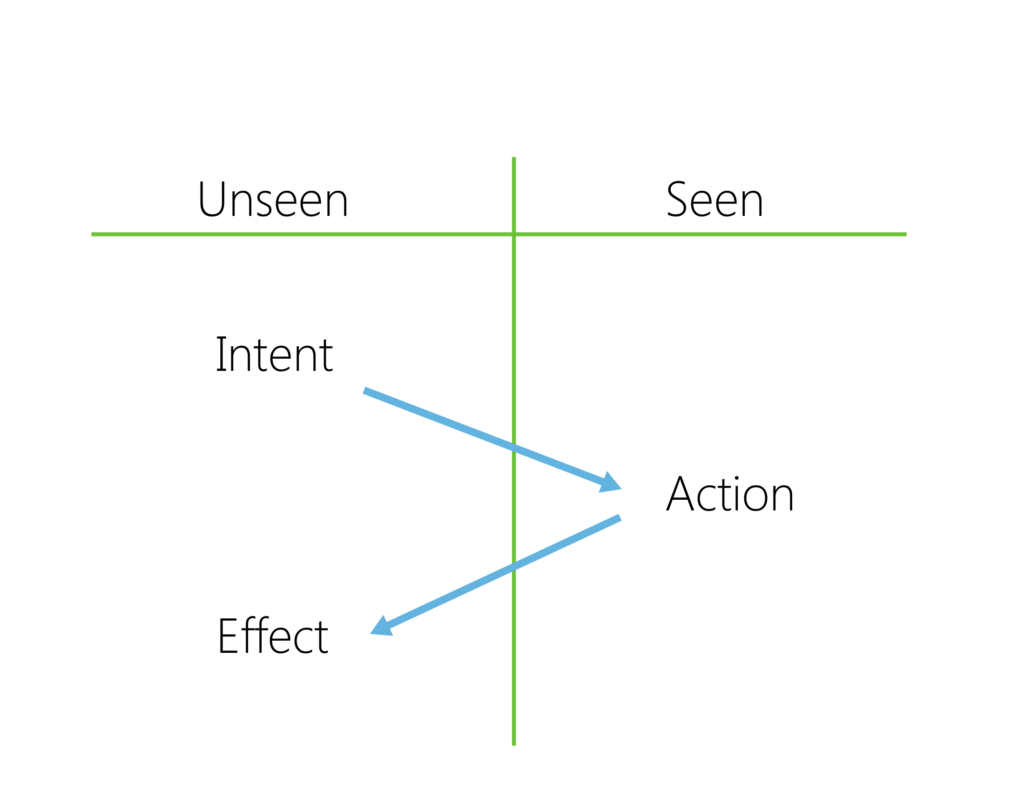
For example, when a co-worker of mine did well on a project, I enthusiastically congratulated her and said, “Great job!” My intention was good and meant to encourage, but came across as insincere to my colleague.
In this case, the compliment was interpreted as sarcasm, and made my colleague feel annoyed with me. Oops.
Even when we don’t intend to cause pain, our words can have a different effect on the person who heard them.
This is where using the Intent/Action/Effect model comes in. If we keep our pain to ourselves on the Unseen side, we can get caught up making up our own meaning behind the other person’s intentions.
“She said that just to get under my skin.”
“Of course he did that; he always thinks of himself first.”
We can use this framework to:
- begin a conversation about the impact an action has had on us,
- gives them the chance to explain their intentions,
- remind ourselves that others don’t know our intentions unless we share them,
- remember that good intentions don’t equate to positive outcomes, and
- stay curious about their side of the story. What could be going on for them that has nothing to do with you?
What do we do when the effect doesn’t line up with our intent? Communication about intentions is important, but equally important is acknowledging, and apologizing for the negative effects we have on others. Just because we don’t mean to hurt someone’s feelings doesn’t mean it doesn’t happen.
One of the best ways to keep conflict from escalating is being open and honest about how we feel about our interactions with others and assuming the best that we can. Rather than jumping to conclusions, we can approach situations with curiosity and asking prompts like,
- “What did you mean by that?”
- “What else was going on for you when you did that?”
- “You may not have intended this, but it made me feel frustrated when you said that.”
How have you used the Intent/Action/Effect model? Tell us below!
Photo by RODNAE Productions from Pexels
References
Dykstra, Jason. (2011, May). Intent Action Effect. Mediate Canada. https://www.mediate.com/articles/DykstraJbl20110516.cfm

Kaitlyn Skelly holds a BA from the University of Waterloo, where she studied Speech Communication, History, and Peace and Conflict Studies. Her undergrad thesis focused on positive and negative interpersonal communication modelled on the popular TV show, Friends. Her interest in mental health and peace education led her to become a Peace Camp director, and a communication intern at To Write Love on Her Arms in Melbourne, Florida. She believes that sharing the stories of our lived experience is how we make meaning of the world around us and learn how to better understand one another. One of her favourite methods of storytelling is through writing. Find more of her work on her blog, A Heart of Glass.
